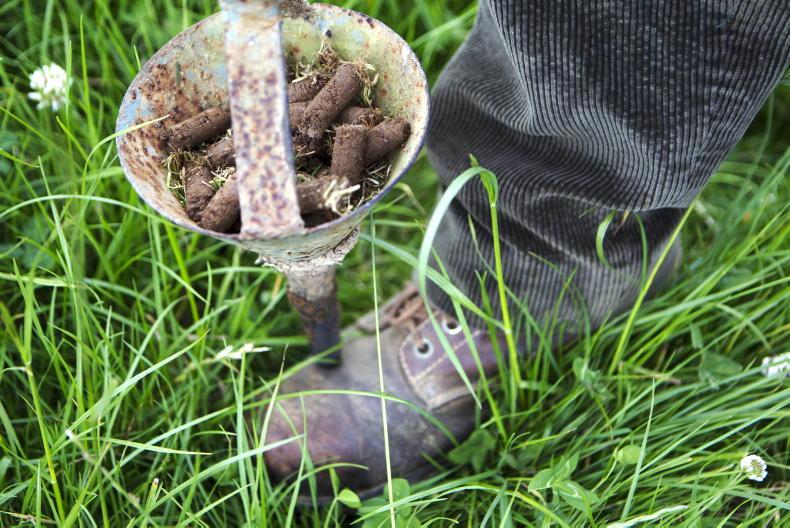Grazing really finished on a high after such a dreadful start earlier in the year.
Even now, ground conditions are still relatively trafficable on free-draining ground and if we have these conditions come the slurry opening date in January, we would be doing ok.
After a lot of growth missed in the first two-thirds of the year, the final third (from early September on) helped make up for some of this loss of growth.
Annual tonnage had been back by as much as 1.5t/ha around mid-summer, but a lot of this will have been clawed back.
The certain way to tell is to complete a closing cover and review annual tonnage both across the farm and on a paddock-by-paddock basis.
Old pasture generally performs as well in the summer as new reseeds, but it’s the shoulder of the year that a reseed really shows its colours and pushes on with growth.
Soil sampling
The next task will be to soil sample paddocks. Ideally, this should be done every two years at a minimum and yearly for intensive enterprises.
At around €30/sample, it makes sense to spend money here rather than apply compounds that may not be needed or applying compounds such as 27:2.5:5 to soils in index 1 or at the lower end of 2 that will not build fertility enough.
Remember to take one sample per 2ha to 4ha, taking 20 cores per sample.
Avoid any water-logged areas, around gates or water troughs or underneath trees where stock might congregate, as this will show an artificially high fertility level in comparison to the rest of the field.
Walk in a W shape across the field for accuracy on the whole field fertility level.










SHARING OPTIONS